MICROSCOPE GRAND MODÈLE ORDINAIRE
:
c. 1860
'NACHET ET FILS, A PARIS'
SERIAL NUMBER: NONE
DESCRIPTION:
Signed on the arm: 'NACHET ET FILS, Opticien a Paris, Rue Serpente, 16. The original fitted case accompanies the instrument. This drum or Martin-type microscope stands at approximately 13 inches high (minimum), with a 4 1/4 inch leaded base. Coarse focusing is simply by sliding the tube, fine is by fine-threaded screw acting from the underside on the sprung continental-style limb. There is a planoconcave mirror and a carrier under the stage to accept substage fittings.
Accessories include:
- Camera lucida
- 45 degree erecting prism (erect in only one direction)
- 360 degree calibrated over-the-eyepiece goniometer
- Eyepiece micrometer in brass mount
- Stage micrometer in brass mount
- Three oculars, with sliding doors on the side to admit the micrometer
- Polarizer and Analyzer
- Stage clips
- Several substage stops
- Compressor
- A three-button objective
- Stand for Bench-type Bullseye Condenser (optics missing)
HISTORY OF THE NACHET Microscope Grand Modèle Ordinaire
MICROSCOPE:
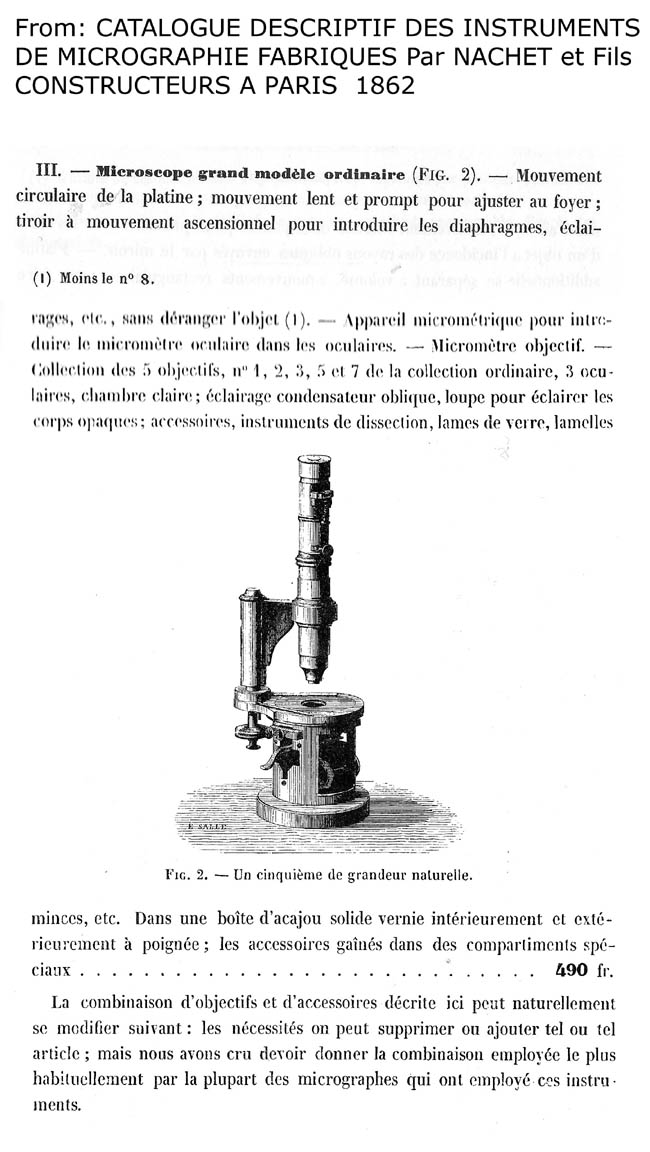 This model was pictured in the Nachet catalogs, but not after 1862, as shown in the 1862 catalog entry to the left.
For history of the Nachet company, please see the historical information under the the entry for the Nachet
Grande.
This model was pictured in the Nachet catalogs, but not after 1862, as shown in the 1862 catalog entry to the left.
For history of the Nachet company, please see the historical information under the the entry for the Nachet
Grande.
The Drum or Martin-type microscope was invented by Benjamin Martin in the Eighteenth century (1700's). It was revived by the French,
particularly Oberhauser and later his successor, Hartnack. Drum microscopes of a simpler (and flimsier) design were made
(with varying degrees of complexity and varying quality) in many countries. The French have the distinction of making the flimsier
versions of these even into the Twentieth century; they were still for sale in the USA in the 1930's,imported from France.
These 'Toy' versions would not compare to the finer instruments intended for serious work, like the instrument pictured above.

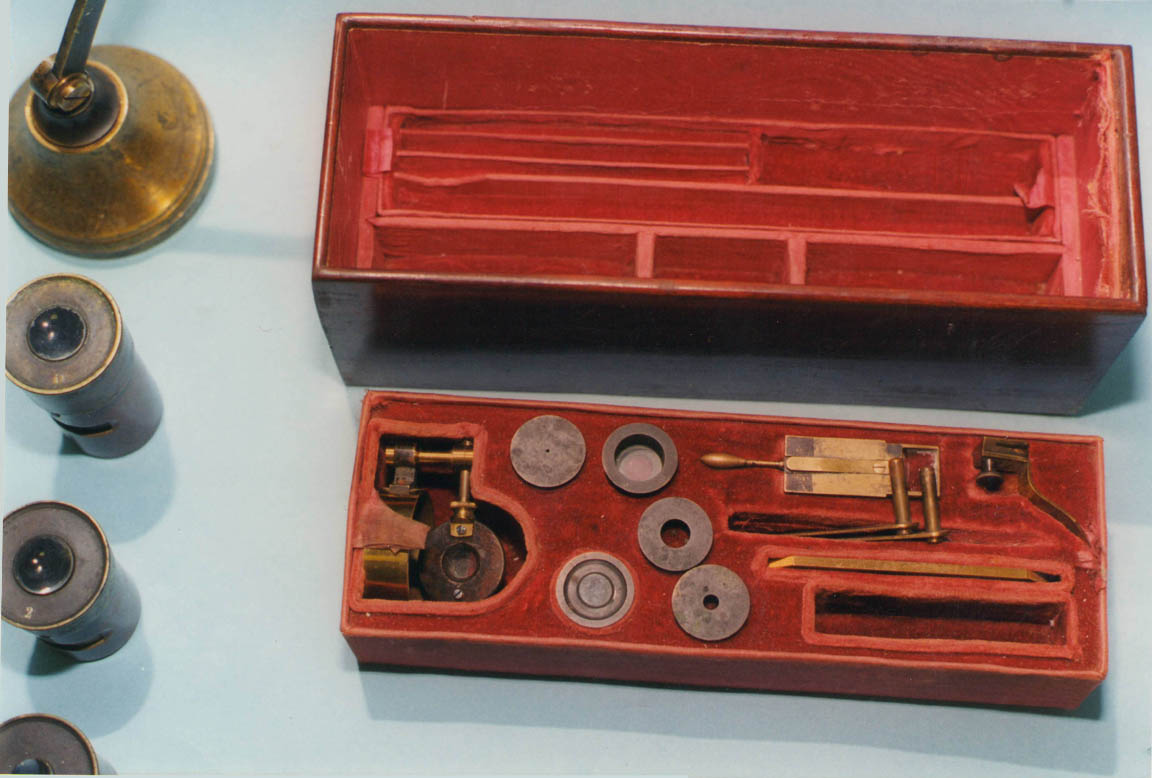

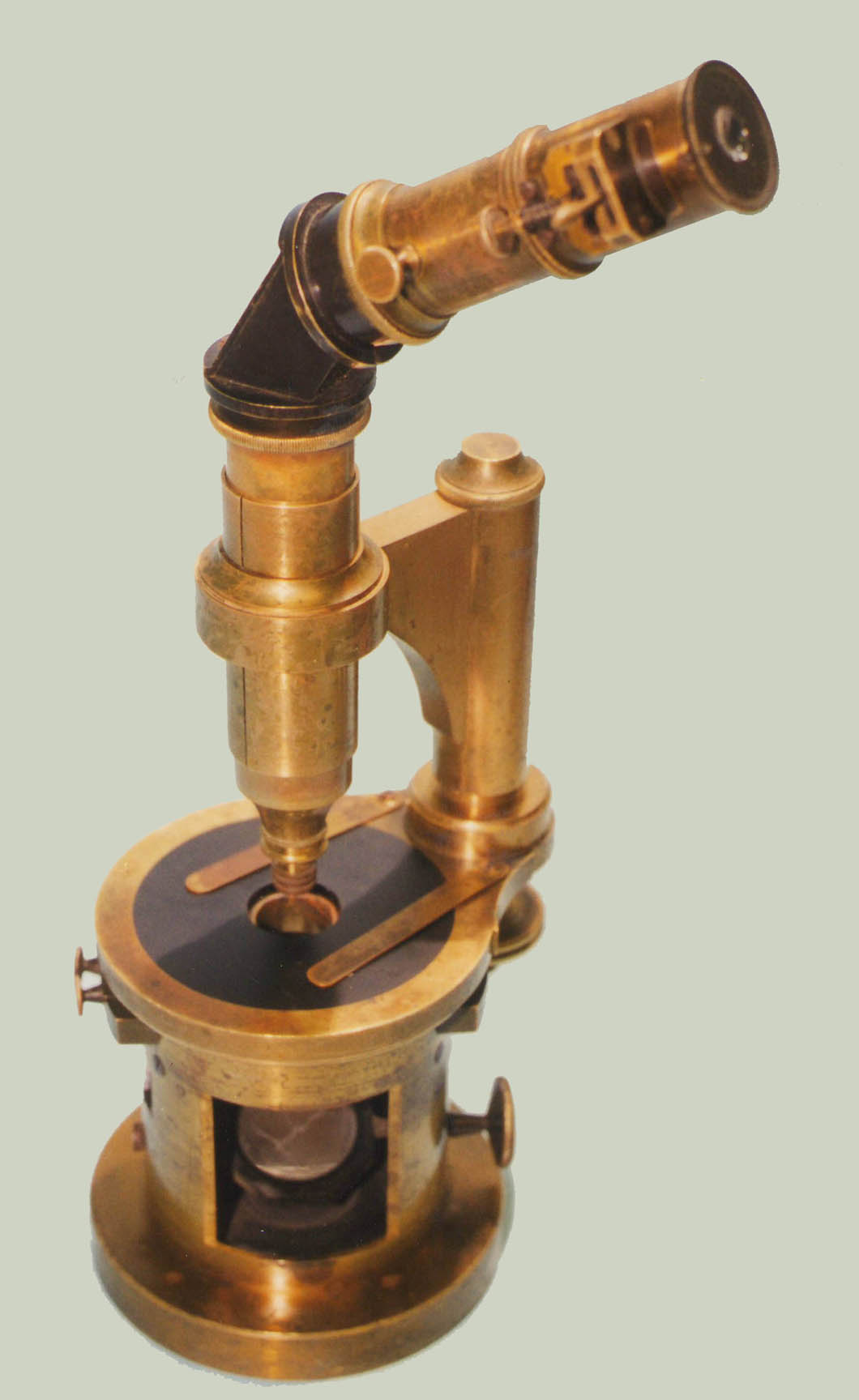
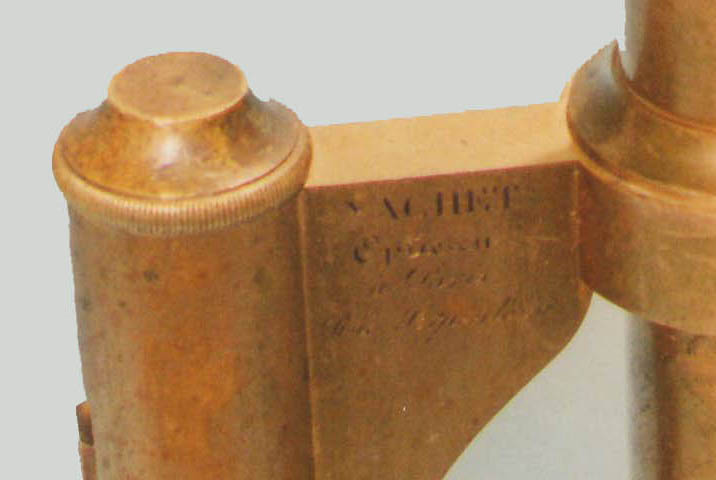
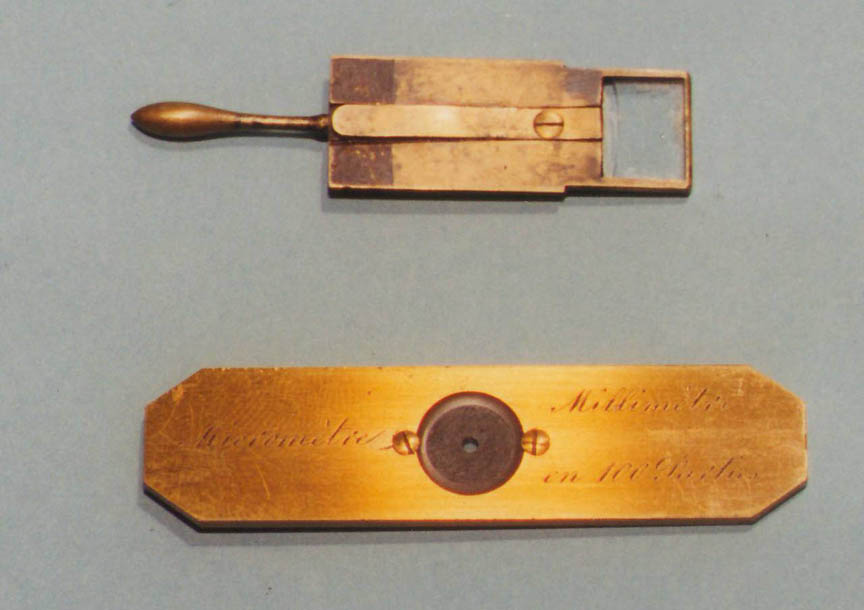
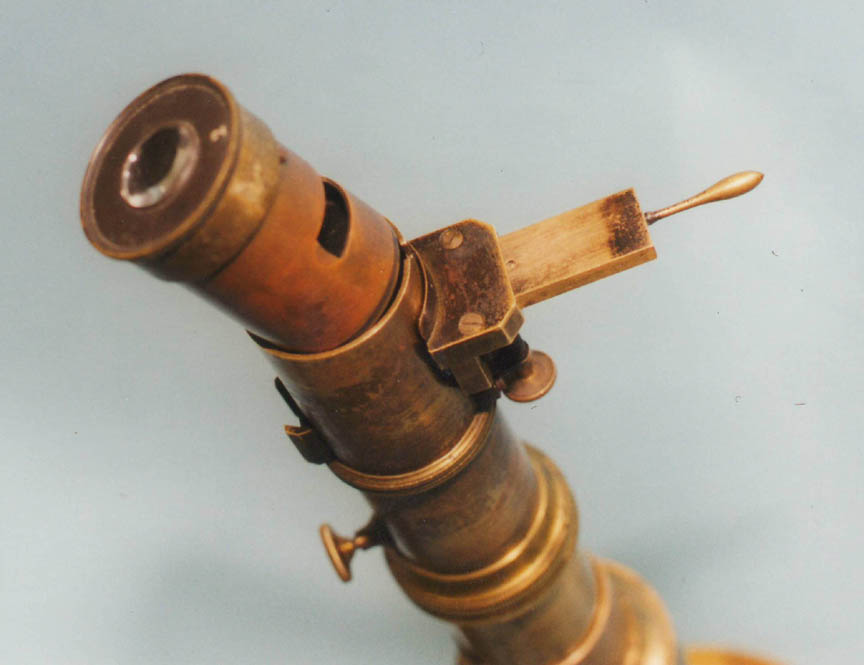
 This model was pictured in the Nachet catalogs, but not after 1862, as shown in the 1862 catalog entry to the left.
For history of the Nachet company, please see the historical information under the the entry for the Nachet
Grande.
This model was pictured in the Nachet catalogs, but not after 1862, as shown in the 1862 catalog entry to the left.
For history of the Nachet company, please see the historical information under the the entry for the Nachet
Grande.